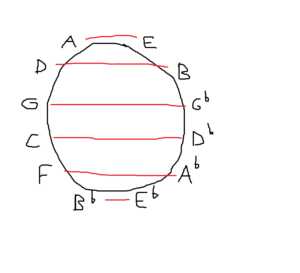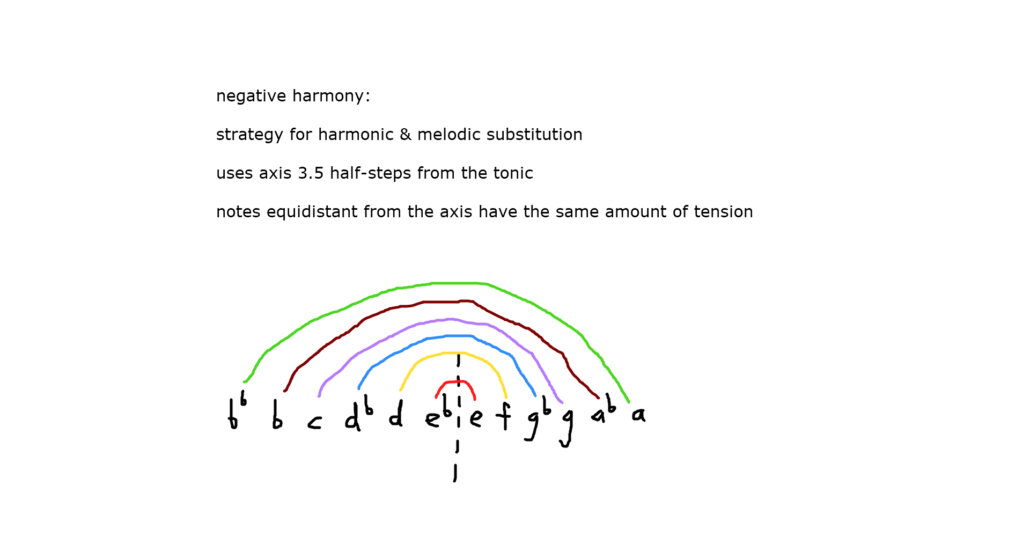Negative Harmony
Negative harmony is a fascinating concept in music theory, where the idea is to invert chords or melodies around a certain axis or point, thus creating a “mirror image” of the original. This concept has been discussed by various theorists and musicians over the years, including Ernst Levy, who wrote extensively about it. Here’s a simplified explanation of how to apply it:
1. Choose a Tonal Center: First, decide on the tonal center or key of the piece you’re working with. This will determine your axis of symmetry. We will use the key of A for our example.
2. Find the Axis of Symmetry: The axis of symmetry is located half-way between the 1st and 5th scale degrees of a major key, i.e. between the flat 3rd and the 3rd. For A Major, this axis would be between the c and c# notes.
3. Invert the Notes: To apply negative harmony, you take each note in your melody or chord and reflect it across the chosen axis. The easiest way to do this is to take the circle of fifths and rotate it so that your key’s tonic is at the top and pair each row accordingly. (For why this works, see the youtube video at the bottom of this page.)
An example in the key of A is as follows:
4. Apply to Chords: For chords, the process is similar but you have to reflect each note in the chord. An A Major chord (a-c#-e) would become an A minor chord (a-c-e) in negative harmony because the a became an e, the c# became a c, and the e became an a. A handy reference sheet that can be used for any key is included in the pdf at the top of this page.
5. Adjust Rhythms and Melodic Contour as Needed: While the pitches are inverted, the rhythm and general contour (e.g., whether the melody moves up or down) of the original piece are typically preserved. However, adjustments might be necessary to ensure musicality.
6. Experiment and Adapt: Negative harmony can result in unexpected and sometimes dissonant sounds, which may not always fit the context of your music. It’s important to use this tool creatively and adapt the results to suit the piece you’re working on.
Negative harmony can offer a fresh perspective on familiar melodies and harmonies, leading to unique and intriguing musical ideas. However, it’s also a concept that benefits from experimentation and personal interpretation, so feel free to explore and modify these steps as you see fit.
2-Minute Video Explanation
The only qualifier to the video I’d like to make (which I realized the next day) is that notes aren’t paired up by the amount of tension to the key’s major scale, but simply to the tonic itself. In other words it was misleading when I used a C major scale as a reference, because the note eb sounds a lot more tense than e that context. However, when the notes are compared just to c, the intervals eb to c and e to c have the same amount of tension as they are both 3rds.





